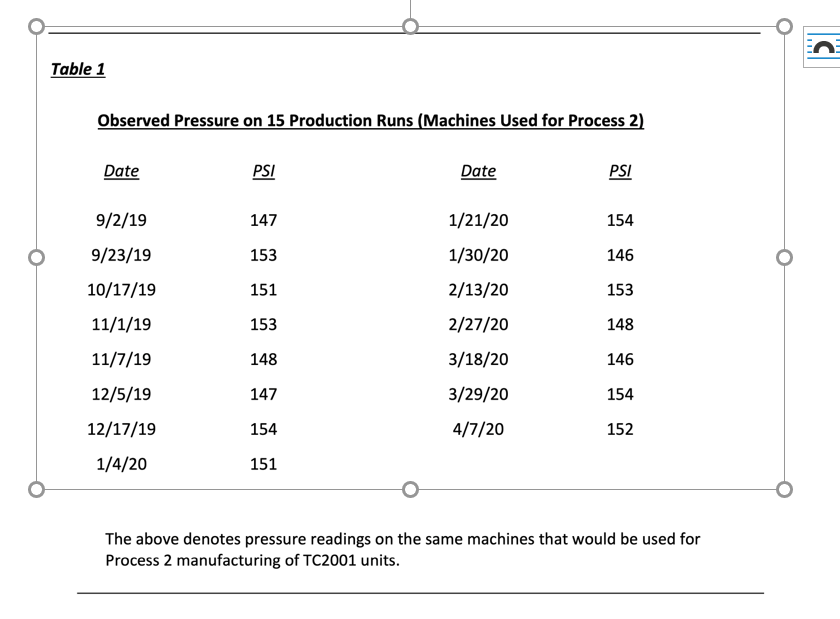Question
1. Which process should VBB choose to produce?? 2. How much would VBP be willing to pay for the testing that is currently offered, for
1. Which process should VBB choose to produce??
2. How much would VBP be willing to pay for the testing that is currently offered, for each batch??
3. Would we be considered a perfect test, at twice the price you computed in #2?
VB plastics in Corporation specialize in the manufacturing of plastic components.
Recently an opportunity arose to produce a new product - TC 2001- which appears to have relatively high, sustainable demand.
However, two components of the production process ? (1) the raw materials Molecular structure and (2) the production process itself - involve uncertainty. this uncertainty has implications for the quality of finished units of TC 2001 (superior versus average), and ultimately, VBP?s profits.
Raw material molecular are structure
Raw materials Vary in molecular structure. Specially, raw materials can either be long-form or short form.
only long from molecularly structured materials can yield superior quality units. If the materials are short-form, the resulting finished units of TC 2001 are average quality.
while suppliers can guarantee that an entire batch of raw materials is of uniform molecular structure (i. e., all of the raw materials in the batch are either longform or short form ), they cannot guarantee which type or batch is, as molecular structure is difficult to observe accurately.
On average, half of the materials available in the market eventually prove to be long form structure.
Production process choice
VBP could use one of three manufacturing processes.
Process A uses of simplified process and yields average quality units.
Process B uses a different set of machinery, which has better temperature controls, but fails to control pressure in the molding process. Thus, Process B can produce superior quality units, but only if molding pressure falls within acceptable levels (and the molecular structure is long form). the acceptable threshold is 150 PSI. that is, as long as the pressure is equal to or exceed 150 PSI, then the process is capable of superior quality units.
Past experience using the process be machines is presented in table 1.
Process C involves machinery that has even greater control than process B machinery, including controls over molding pressure. Thus, process C guarantees superior quality units (assuming that the molecular structure of raw materials is long form).*
*VBP currently owns the machines necessary for process A, B or C and these machines currently have capacity. However, given the batch level manufacturing approach, single process needs to be selected for each batch, so that the capacity of the other machines can be allocated to other products and production runs.
Profitability implications
Revenues are a function of whether the final product is of superior quality or average quality. There is sufficient demand for both type of product, but the price charged for each quality level differs. Specially, superior quality units command a price of $0.60 per kilogram; average quality units command a price of $0.50 per kilogram.
Projected cost are as follows
Process A $0.13 per kilogram; $200 set up for batch.
Process B $0.15 per kilogram; $500 set up for batch.
Process C $0.17 per kilogram; $1000 set up for batch.
Assume that the level of production being considered is a single batch of 1000,000 kilograms.
Other information
Potential for testing
VBP recently learned of an opportunity to test the raw materials after they are purchased, but before they are put into production (i.e. and thus before the production process is selected).
Testing involves a complex process, the cost of which are difficult to anticipate.
The developer of the test offered the following information regarding the average performance of the testing.
- For materials known to be long form, 96% tested as ?large?, and 4% tested as ?non- large?
- for materials known to be sort form, 24% tested as ?large? and 76% tested as ?non-large?

Table 1 Observed Pressure on 15 Production Runs (Machines Used for Process 2) Date 9/2/19 9/23/19 10/17/19 11/1/19 11/7/19 12/5/19 12/17/19 1/4/20 PSI 147 153 151 153 148 147 154 151 Date 1/21/20 1/30/20 2/13/20 2/27/20 3/18/20 3/29/20 4/7/20 PSI 154 146 153 148 146 154 152 The above denotes pressure readings on the same machines that would be used for Process 2 manufacturing of TC2001 units.
Step by Step Solution
3.35 Rating (167 Votes )
There are 3 Steps involved in it
Step: 1
To determine which production process VBP should choose the expected profits for each process should be compared The expected profits can be calculated as follows Process A Probability of longform mat...
Get Instant Access to Expert-Tailored Solutions
See step-by-step solutions with expert insights and AI powered tools for academic success
Step: 2

Step: 3

Ace Your Homework with AI
Get the answers you need in no time with our AI-driven, step-by-step assistance
Get Started


